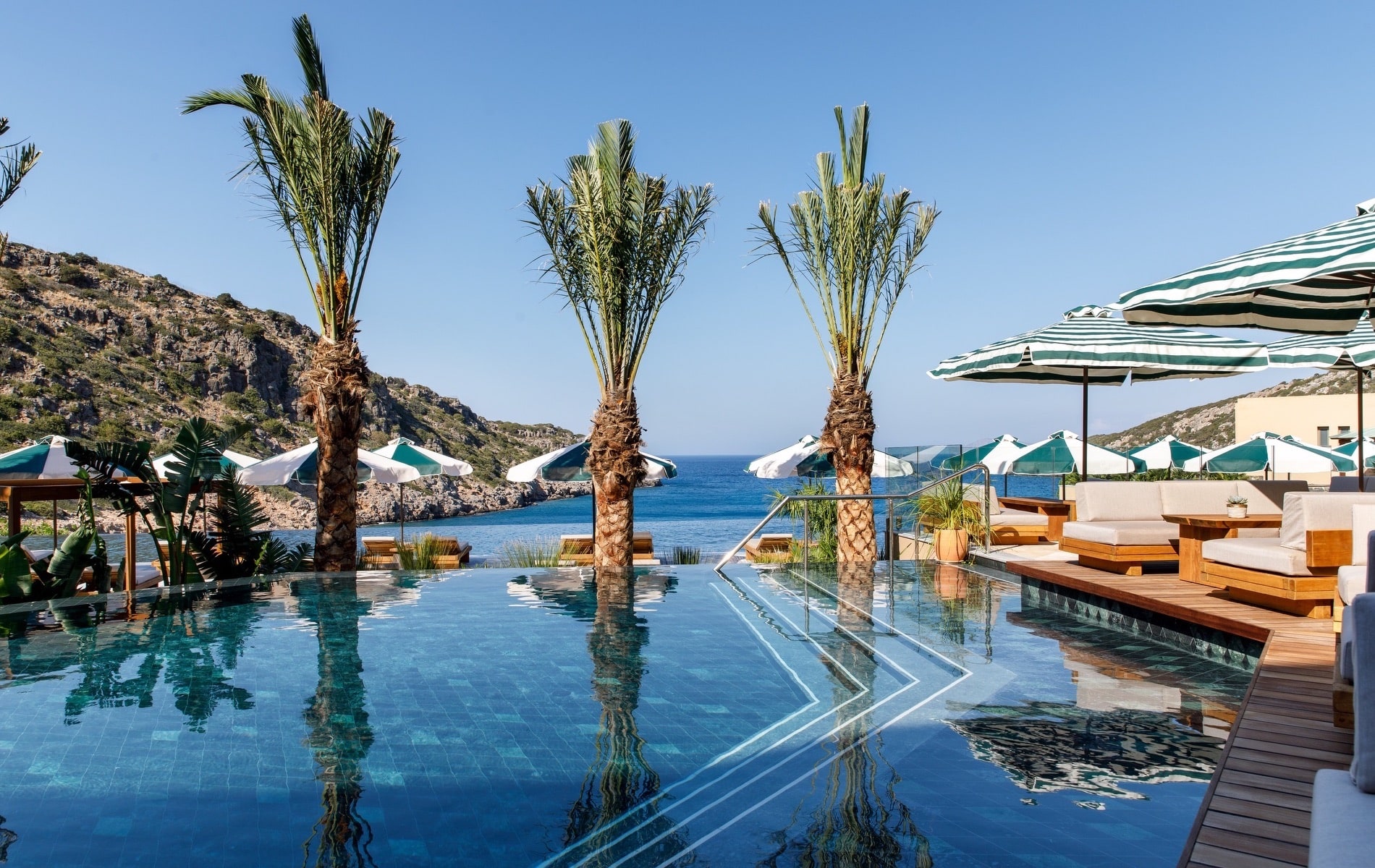
vie-magazine-DRAW-min
Set against a secluded bay, Daios Cove Luxury Resort & Villas is nestled on a hillside on the beautiful northern coast of Crete.
Bringing the World Home
Interview by Emme Martin | Photography courtesy of d-raw studios
As the term travel starts to reenter our vocabularies, we remember why we love it. Immersing ourselves in a new environment reinvigorates our curiosity for the world and evokes a sense of wonder. Fresh aromas and sights seem to have a way of allowing us to step out of our mundane ways and simply be present. The lack of travel this past year has led many to try and recreate this feeling at home. No one understands creating a resort feel better than London-based architectural collective d-raw studios, the interior design team behind the leading Cretan resort, Daios Cove. We talked to d-raw studios about the design process of Daios Cove Luxury Resort & Villas and how you can still “travel” through design in your own home.
VIE: What makes Daios Cove unique from other resorts in Greece?
d-raw: Daios Cove is completely site-specific; it’s grounded in the unique heritage and traits of the location, conceived to feel and function like a village destination, not a traditional hotel complex. Exemplifying this are its five levels built around a natural amphitheater-like arrangement that rises from a sandy bay, flanked by the privacy of rocky cliffs on both sides. It’s like stepping into a secluded Cretan hamlet.
VIE: How does respect for the natural environment enhance the design aesthetic?
d-raw: d-raw: Nature provided both the design cues and the context for Daios Cove. Here, creating a sense of harmony with the natural environment—specifically the incredible beauty of the Aegean Sea, the rugged landscape, and the clandestine coves of Crete—really led the architectural and design thinking. The colors of the sea, the angles and contours, the inherent privacy and drama of the cliffs, and the local flora and fauna inspired the color palette and materials we used. They also gave us a baseline narrative, a sort of cinematic understanding of how the ambience should be, which was really critical.
The power of nature is so potent here—the light, the heat, the sounds, and the smells—and we wanted to plug into that energy and sense of mystery.
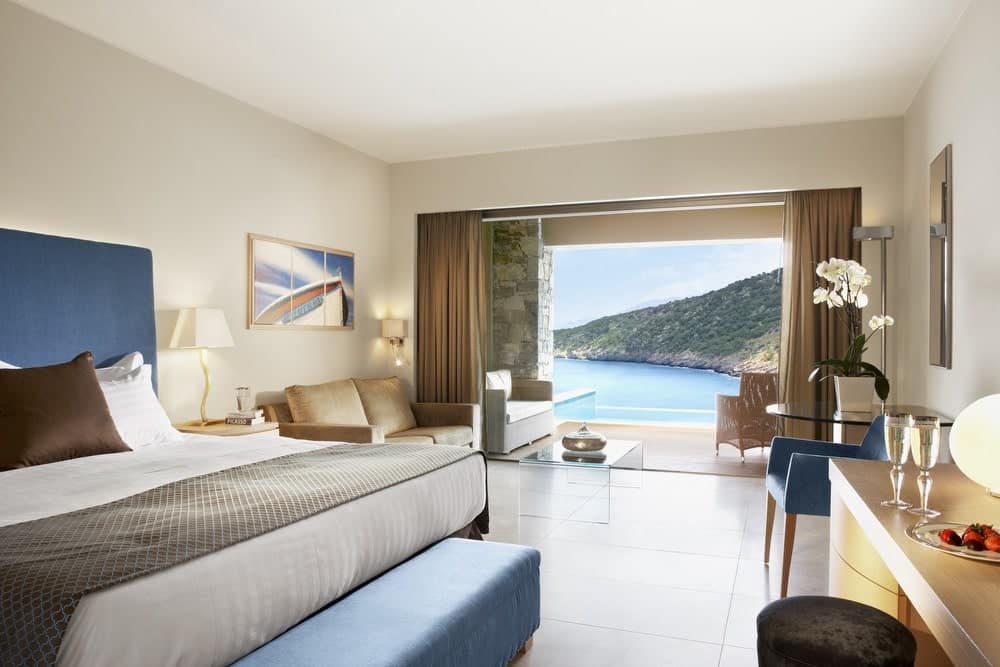
Daios Cove is minimalist, modern, and chic with a carefully curated designer style.
VIE: Tell us about the importance of sustainability in the design.
d-raw: Sustainable design solutions underpin a lot of the architectural thinking at Daios Cove, driven by the desire to preserve its incredible natural gifts and present a design that could be a benchmark for eco-hospitality. In addition to making a conscious decision to use local materials throughout, we were very lucky because numerous initiatives, particularly concerning water conservation, were already underway. Most notably, the resort has its own desalination plant that provides all running water to the cove. The plant is a feat of engineering that avoids using local water reserves; the need to circumvent depleting local resources often gets overlooked in hotel design. Additionally, all the wood has been locally sourced and treated to allow it to “gray” gracefully, advocating for the beauty and allure of organic aging. Other (also local) materials include antique terra-cotta, fluted traditional limestone, calacatta oro marble, polished brass, blackened steel, and chevron-patterned teak marquetry.
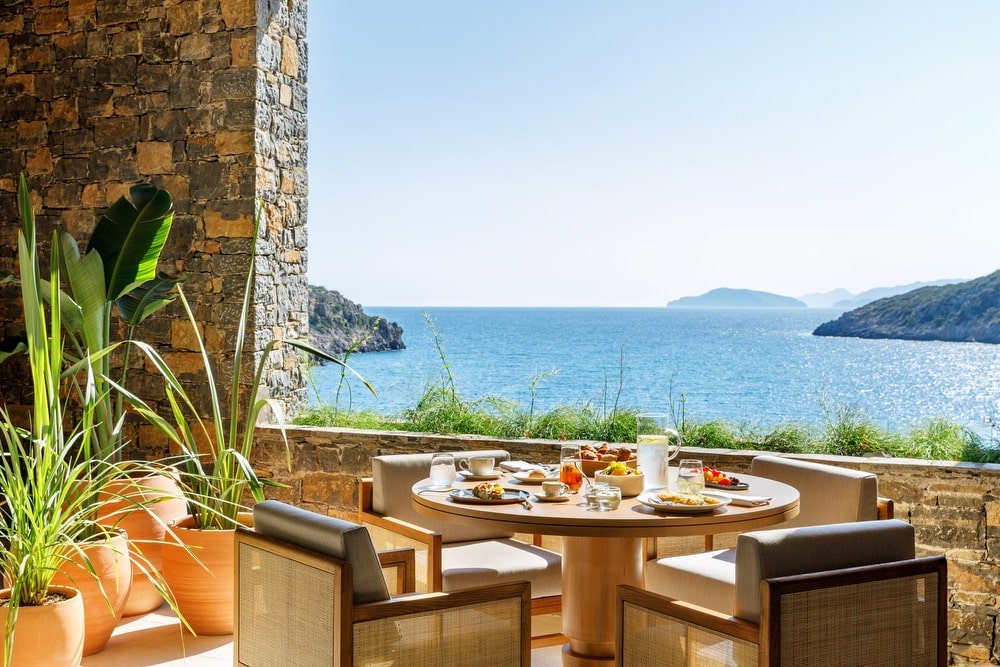
Each room and common area of Daios Cove offers a distinct indoor-outdoor sensibility, blending the accommodations and the environment.
VIE: What was the inspiration behind the multilevel architectural design?
d-raw: The historical, archaeological significance of the site—it includes an ancient Roman quarry—was key to retaining the multilevel structure. When the resort was created in 2010 by Athens-based 3SK Stylianidis Architects, they’d already established a design that respected that lineage, creating an amphitheater-like curve of villas and other spaces that follow the natural incline of the terrain to give an unimpeded view across the bay.
We wanted to honor those key elements of the original design and build on them, so we worked with that sweeping half-moon contour and continued to develop the green, bio-rich rooftops of the rooms. It ensures the built environment blends into its natural surroundings even further as time goes by.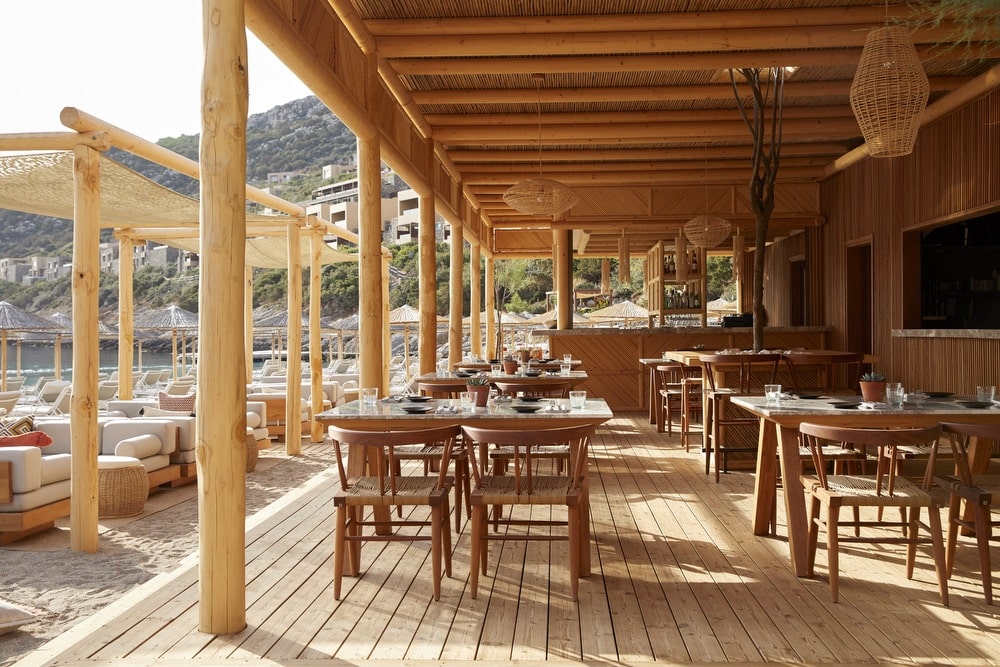
VIE: What inspired the emphasis on indoor-outdoor living at Daios Cove?
d-raw: Treating the outdoors as a space in its own right has always been a vital tenet of the joys of Mediterranean living. It’s part of the very seductive notion of an endless summer, so it was a logical focus for us to accentuate the idea of a blended indoor-outdoor experience.
We wanted visitors to be able to breathe in and soak up the colors, scents, and 180-degree views of the Aegean Sea even when they weren’t entirely outdoors. A great example is a poolside beach bar, sun terrace, and dining space halfway up the cliff face. It features a wooden pagoda and a cluster of low-level cabanas, blending “inside” and “outside” to create a convergence of the senses.
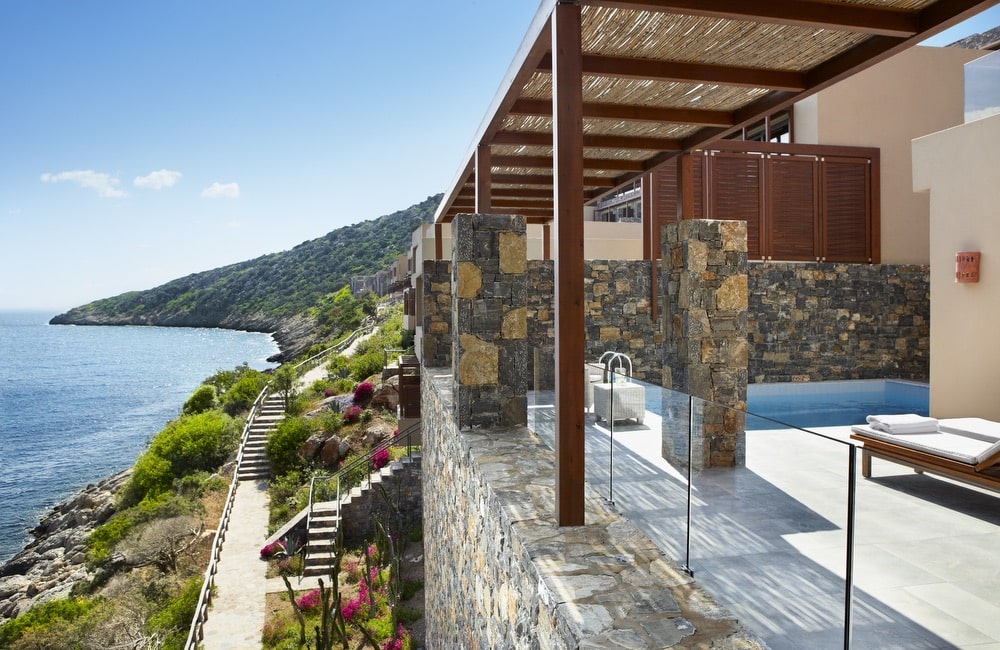
The resort’s architecture has been crafted from the natural environment. It recently underwent an extensive renovation and enhancement conducted by London architecture firm d-raw studios.
VIE: How has the pandemic affected the redesign?
d-raw: We completed the redesign pre-pandemic, but a lot of the work champions sentiments that have become much stronger since distancing: the greater desire to connect with nature, the thrill of heightened sensory experiences, and a sense of calm amid an escape. These were important pre-COVID, but now they feel absolutely vital.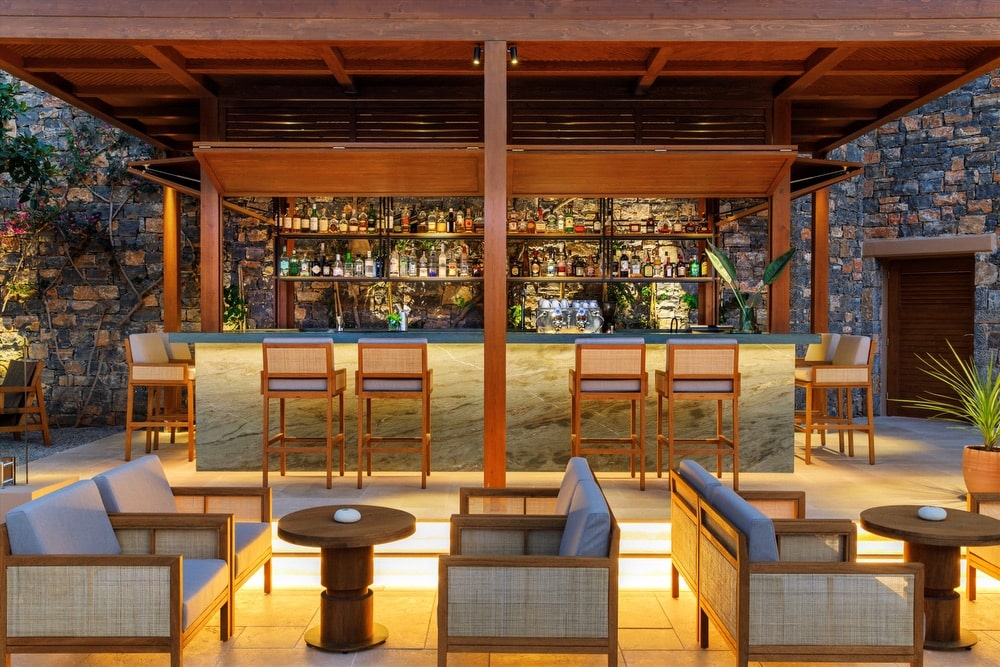
VIE: Tell us more about the gastronomic experience offered at Daios Cove.
d-raw: The design for The Beach House, the Ocean Level restaurant, and the Culinary School (the first of its kind beyond Paris) were all crafted in collaboration with Ducasse Conseil, a catering consultancy helmed by the Michelin-starred chef Alain Ducasse. They aim to take fine dining on Crete to new gastronomic heights. At the core of this is a series of menus designed to raise the visibility of Crete’s rich culinary heritage. The island sits at the crossroads of three continents, surrounded by four seas, and bears cultural influences from several civilizations, providing plenty of opportunity for incredible fusions.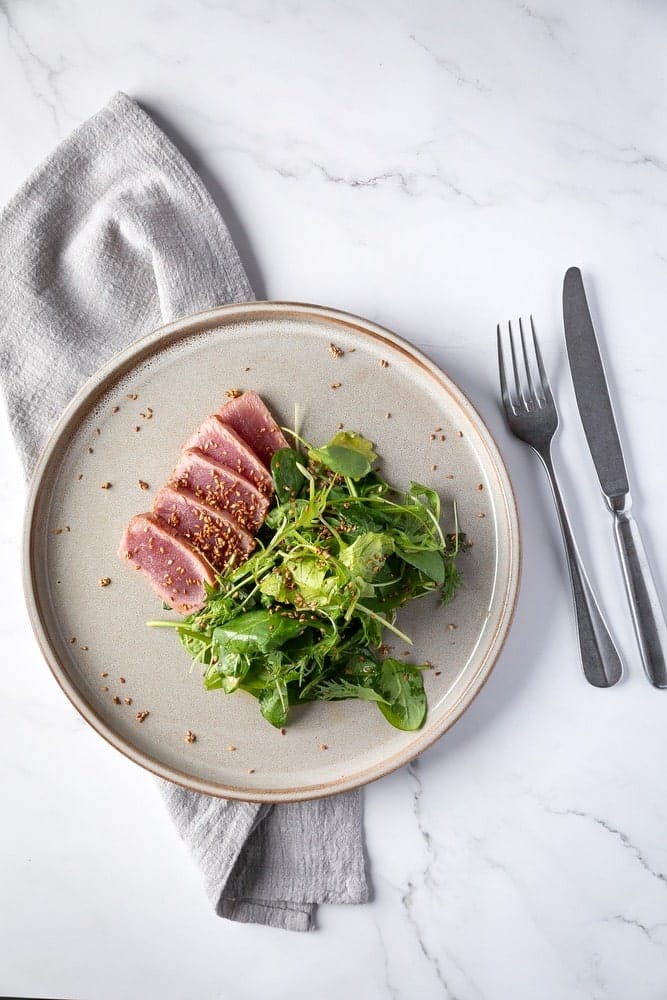
When planning the Culinary School, we traveled to Alain Ducasse’s training school in Paris to observe the team there and reimagine the kitchen workshop interiors for the resort. We adapted the Daios Cove space to specifications so they’d be perfectly conducive to creating the optimum cooking experience (just as they are in Paris), but with our stylistic amends. These included hydraulic tables that allow students to cook while standing and sample/dine when seated, matching the overarching aesthetic of Daios Cove.
VIE: Tell us about the decision to make the pool emerald green and the use of color throughout the hotel.
d-raw: The decision to make the pool emerald green was also part of the focus on blending the natural world and the man-made environment. Breaking away from the “piscine blue” usually used for pool tiles is surprisingly rare, but that color felt far too clinical for Daios Cove. Instead, we retiled the entire pool so the interior exudes a wonderfully rich viridescence. The emerald tiles subtly darken the color of the water, creating a seamless match to the Aegean Sea directly beyond it, so there’s a sense of swimming out into the ocean—no limits, blissful freedom. We echoed that same beautiful green in the mosaic jade stone and crackle-glazed porcelain tiles in other areas of the hotel.
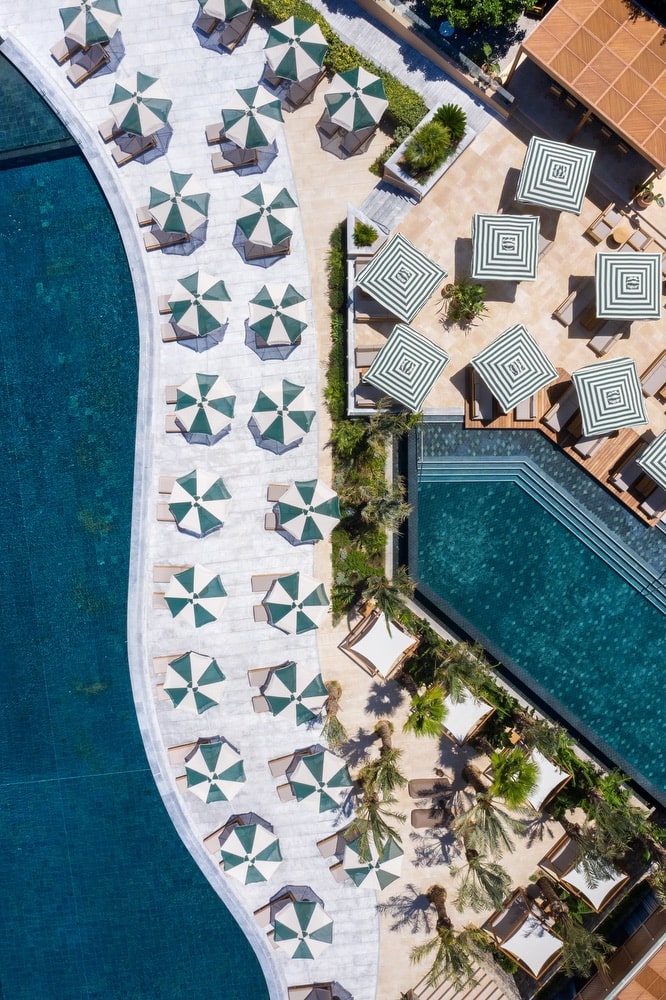
Every aspect of the design and programming at Daios Cove, from the infinity-edge pool to the spa facilities, the use of locally sourced building materials, and the focus on seasonal local ingredients in all its dining establishments, draws inspiration from Crete and keeps sustainability in mind.
VIE: How does the design of the GOCO Spa encourage optimal relaxation?
Daios Cove: A number of rejuvenating elements in the design of the GOCO Spa promote that sought-after feeling of ultimate relaxation. Serene color schemes, soothing scents in the air, and music to calm the nervous system all set the tone for the perfect spa day. The spacious 146-square-meter heated pool for swimming and hydro movement, as well as a 94-square-meter vitality pool, bring the aquatic element to life with its healing energy. The Finnish sauna, soft sauna, and Mediterraneo and Nimfea reaction showers create tailored therapeutic circuits that detox, invigorate, balance weight, and support restful sleep.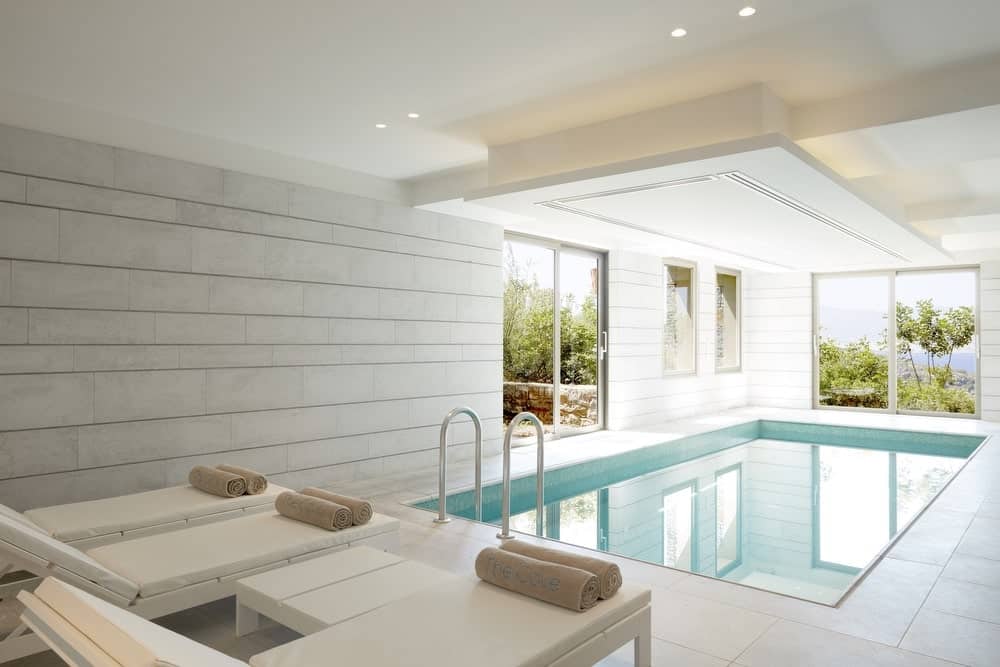
VIE: What are some of the mood-enhancing elements of the gardens throughout the hotel?
d-raw: The destination’s landscaping is critical because of the joyous combination of colors and scents and the use of lush foliage to create pockets of privacy. Native fan palms, banana leaves, and regal birds of paradise weave between the apartments and restaurant spaces, so visitors are always extremely close to some degree of sensory delight, whether it be stimulating or calming.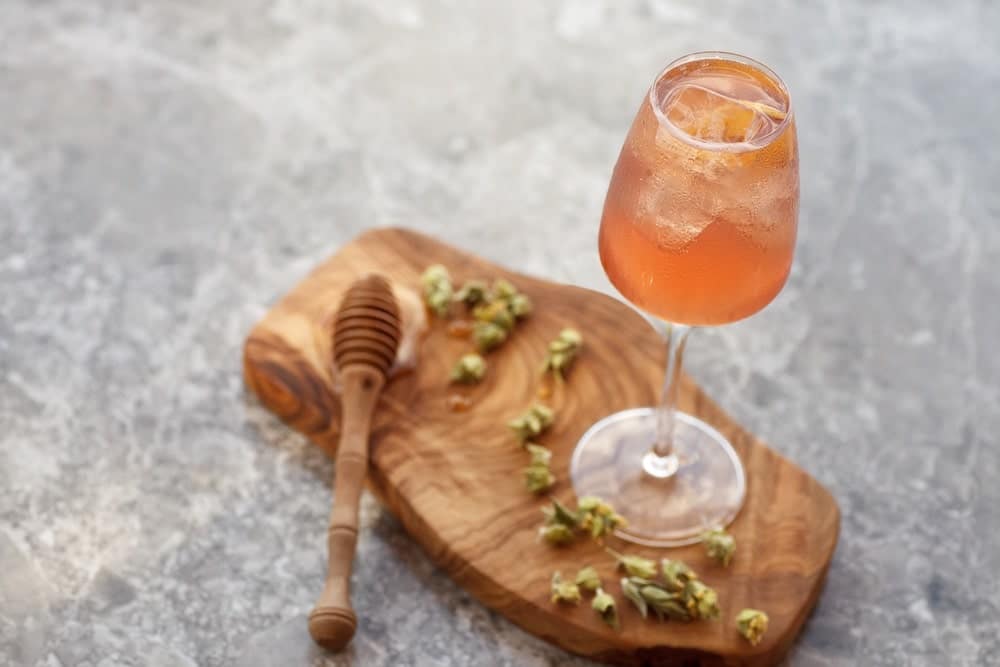
VIE: What are some tips for our readers to create the resort feel in their own homes?
d-raw: The aforementioned power of scent, or olfactory design, is probably the most instant and impactful way to emulate a resort feel, especially for anyone with green fingers. Smell is one of the most evocative senses, and for Daios Cove, the key scents we chose were honeysuckle jasmine and lemon blossom.
VIE: Do you have any advice for our readers on how they can still “travel” through design?
d-raw: This is an interesting question because of the shift we’ve seen over the last eighteen months. At the start of the pandemic, the major focus was on nesting—to an extent, escapism via retreat and cocooning at home—whereas it’s now much more about wanting to adapt your personal space to expand your horizons, including adding reminders of amazing travel experiences.
For some people, this might happen through scent, plants, or flowers. For others, it could be more extensive, something that emulates resort-like amenities—for instance, building an outdoor dining or fire pit area, maybe even with hand-crafted oversize swings! Color (see above for the importance of emerald green at Daios Cove) and design treatments that you can adapt to any size space, such as beautiful tiling, can also work exceptionally well in invoking a sense of place.
— V —
Visit d-raw.com to learn more about this London design studio and head to DaiosCoveCrete.com to book your stay at this luxury five-star resort.
Share This Story!
KEEP UP WITH THE LATEST STORIES FROM VIE


















































































































































